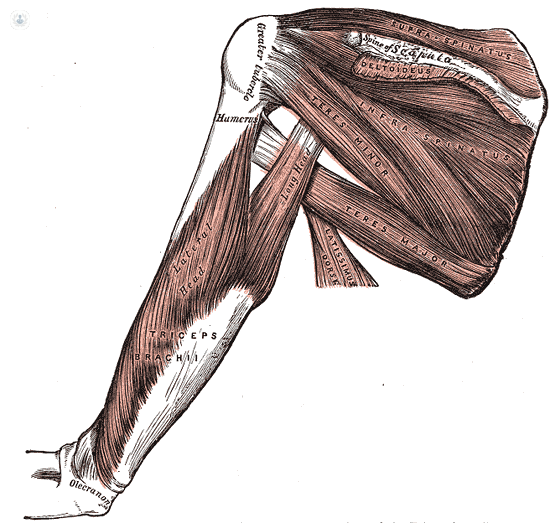6 Key questions about shoulder arthroscopy
Written by:
What is arthroscopy?
 Shoulder arthroscopy is a minimally invasive surgery that involves making small incisions less than 1 cm with a camera inserted through a hole of 5mm. With arthroscopic view you can reach all corners of the shoulder than open surgery not allowed to see. Usually performed between three and five holes 5mm in each surgery, through which the accessory instruments to repair injuries happen.
Shoulder arthroscopy is a minimally invasive surgery that involves making small incisions less than 1 cm with a camera inserted through a hole of 5mm. With arthroscopic view you can reach all corners of the shoulder than open surgery not allowed to see. Usually performed between three and five holes 5mm in each surgery, through which the accessory instruments to repair injuries happen.
This technique allows specialists in traumatology : visualize, evaluate, diagnose and repair on the spot all damages in the shoulder joint.
When should shoulder arthroscopy?
Shoulder arthroscopy is performed mainly for the pathology called rotator cuff, which are the tendons that move the shoulder (supraspinatus, infraspinatus, biceps, teres minor and subscapularis). These tendons can break after an injury from a fall, a pull or even degenerative form; since the rotator cuff undergoes degeneration after 40 years.
The other major pathology why this surgery is performed is instability or recurrent shoulder dislocation usually called Bankart lesion repair, associating a plication of the shoulder joint capsule. Other diseases such as acromioclavicular dislocation or fracture of distal clavicle level or part of the humeral head can also be treated by this technique.
On other occasions they are made for some less common diseases such as frozen shoulder or capsulitis, Entrapment nerve (suprascapular and axillary).
Does the shoulder arthroscopy involves some risk?
The surgery is performed under regional anesthesia (Arm), which is administered preoperatively sleeping area arm, associated with general anesthesia by mask to reduce the risk of intubation of the trachea. The risk of postoperative infection is virtually nonexistent (1 in 10,000). On the other hand, the possibility of causing damage to the deltoid muscle, which is the engine of the shoulder, is nonexistent.
Shoulder arthroscopy offers a great advantage: it has the same results as open surgery but without damaging the tissues and muscles, which means less damage and less risk of complications.
How long does it take to return to work after an arthroscopy?
Around the world of work it depends on the type of work. If the job is in an office, the patient may reinstate the week of the operation; since you can remove or loosen the sling to write on the computer. People who have a need to drive, have to wait between four and six weeks to do so. If instead the job requires physical exertion with weight lifting over her shoulder, return to work may take up to three months.
What it is is the postoperative shoulder arthroscopy?
The same day of the surgery the patient usually go home. Even if the operation is performed in the afternoon, it is entered to stay overnight at the hospital. You should wear a sling clothes outside for about four to six weeks, depending on the pathology.
A week after the intervention, surgery points are removed (three to five points). They will be prescribed painkillers to take painkillers during the first week to avoid pain. Shoulder arthroscopy is greater postoperative comfort compared to open surgery.
As for exercise, it is important to stretch the elbow while sitting and mobilize the wrist and fingers. A week after the operation, the patient exercises to practice the whole pendulum arm to avoid the famous and feared shoulder stiffness taught.
After undergoing shoulder arthroscopy, rehabilitation is necessary?
If sling is indicated, the patient can perform rehabilitation home with a pattern that is taught without having to go to a rehabilitation center. If instead you are instructed to use a sling to protect the tissue repair surgery, you should begin rehabilitation a week of the operation with passive movement of the arm sliding his hand down on a table. You should begin rehabilitation with a physiotherapist from the third week.
Rehabilitation should be continued until the third month in a specialized center for further follow a pattern of enhancement of muscles with exercises at home or in the gym. It is advisable to go to the pool because of the convenience of exercising in water.
Edited by Noelia García Pino
